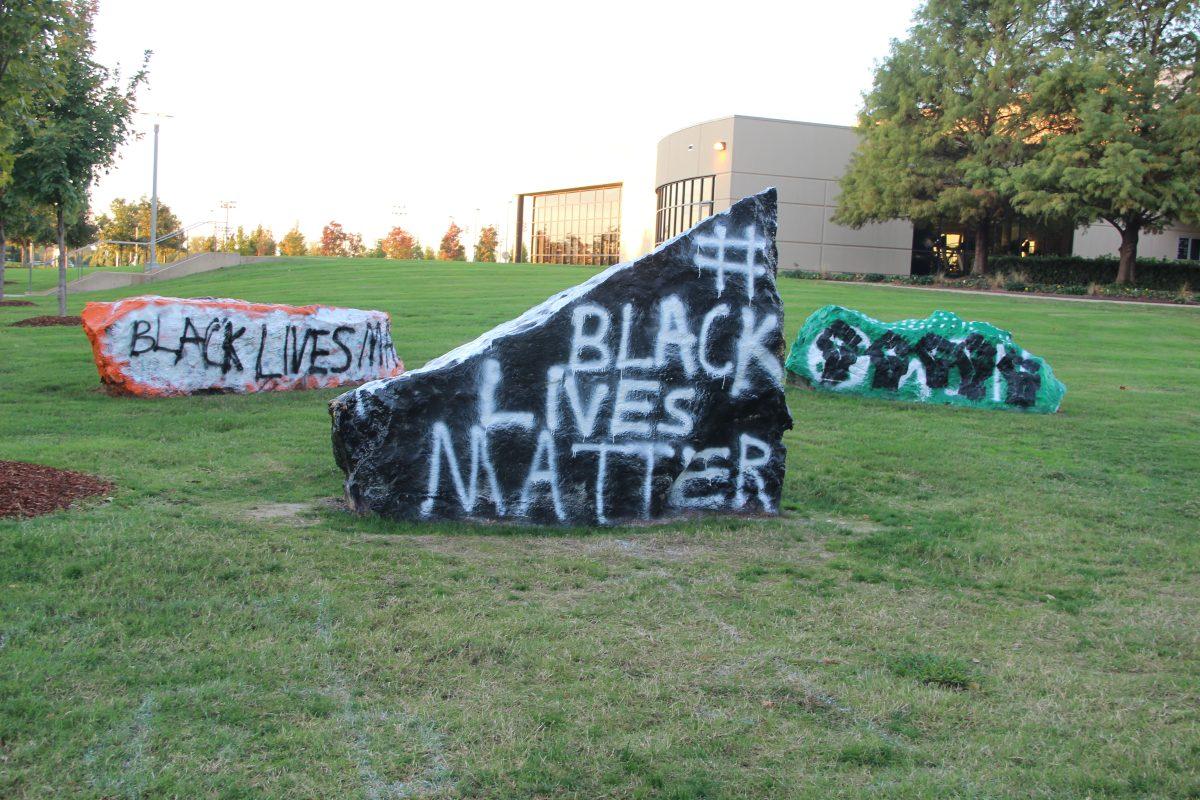Recent protests at the University of Missouri highlight UTD’s relative youth in dealing with racial problems on campus
Many students are taking a step back and examining the role race plays in their lives after allegations that the University of Missouri doesn’t pay proper attention to the needs of minorities have incited racial tensions at college campuses around the country.
UTD has one of the most diverse campuses in the state, if not the nation, and there hasn’t been a long history of experience when it comes to handling racial strife here — and it’s unclear if that’s good or bad for the campus.
At most of the institutions where this recent fight against racism is taking place, there have been years of struggle to maintain racial tranquility. Missouri, which was a dark place during America’s struggle with slavery, founded its flagship university in 1839.
It wasn’t until 1950, almost 100 years after African Americans were granted citizenship, that the university accepted its first black student.
When this type of history is present, it’s not surprising when the ghost of institutional oppression still haunts students, faculty and staff. At a place like Mizzou, there are probably still people who work there who remember what it was like when black people were non-existent on campus because they just weren’t allowed to be there.
These wounds are hard to heal. Students at Missouri were clear and vocal about how they felt uncomfortable and often threatened by an unwelcoming campus atmosphere after university officials didn’t make any changes after multiple complaints about racial injustice were made to administrators.
They used the hashtag #ConcernedStudent1950 to identify their movement, paying homage to the first students who were allowed into the school over half a century ago.
As I watched the coverage of the protests and how charged and outspoken people in Columbia were, I couldn’t help but wonder how students at UTD would react if similar incidents happened here. Would people be up in arms? Would there be such a swift call to action?
The history of our university differs from many around the country because of how relatively new our campus is. UTD was founded in 1969, making this school younger than my father. Students here never had to experience what it was like for something as simple as racially equal access to admission to not be guaranteed.
Compared to other universities, UTD has been surprisingly effective at being accepting of all races. The university hired Franklyn Jennifer, a black man, to serve as university president from 1994 to 2005. In comparison, having a black president is something that not even UT Austin, the system’s flagship school, has done.
Despite the lack of obvious racial barriers, the number of black students currently enrolled stands at a shockingly low 5 percent. Sadly, those numbers stay about the same at other universities. At UT Austin, only 4 percent of the student body is black. At the University of Texas at San Antonio, that number jumps, but only to 8.16 percent.
Clearly, there’s a problem on this campus and other campuses around the country with representation of black students. That’s the underlying problem of what’s happening at Missouri and, if we’re not careful, it may happen here.
While racial strife has never seemed to be a major problem here, I fear that underneath the surface of harmony UTD promotes, there are deeper problems at work.
None of this was more apparent to me than when an argument about race nearly ripped apart a class I was in as a freshman. During the course of what seemed to be a regular debate that had nothing to do with race, one student blurted out that black people feel entitled.
That’s when I heard the pins drop.
Soon, the class became divided between those who agreed with the statement and those who couldn’t believe what had just happened. I was literally rendered speechless. I turned to a student sitting next to me, who happened to be black, and I’ll never forget the double take he did as he tried to process what he had just heard.
I remember sitting and thinking a long time about what happened that day and what it meant. Slowly, I realized that maybe my college isn’t as accepting as I thought it was.
UTD, like any other university, is still defining itself racially. We have never had a moment of singular racial strife that we can all point back to and say we learned from, which makes me hopeful because we won’t have to fight some of the past demons other schools have had to exorcise.
It also makes me worried, because that same lack of experience may make us less adept at fighting the devils that potentially await us just around the corner.
A few days after Tim Wolfe, the president of Mizzou, stepped down, I was walking on campus early in the morning when I saw that the Spirit Rocks were painted with the hashtags #BlackLivesMatter and #UTDtoMizzou in solidarity with the students struggling in Columbia. Cynically, the first thing I thought of was what would happen if someone protested the paintings.
Sure enough, later that same day, someone had, with red paint, crossed out “Black” and replaced it with “#AllLivesMatter,” literally blanking out the concerns of those who had painted the message.
Maybe we don’t have the same problems as the University of Missouri and other more established schools face. But that doesn’t mean we’re not capable of creating our own ghosts that may come back to haunt us one day.






